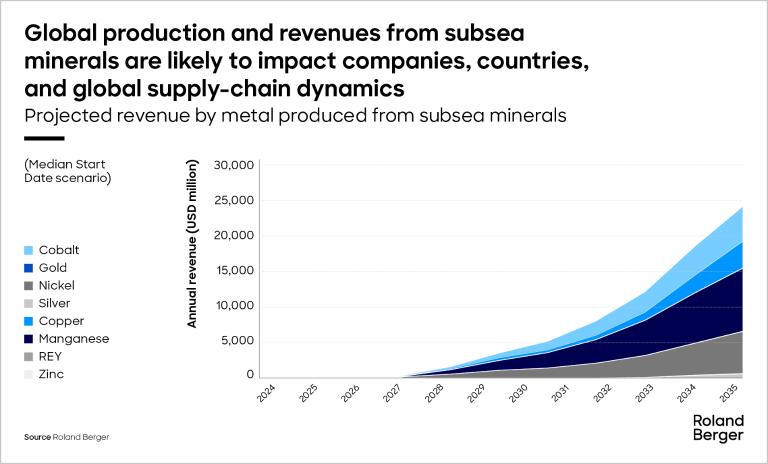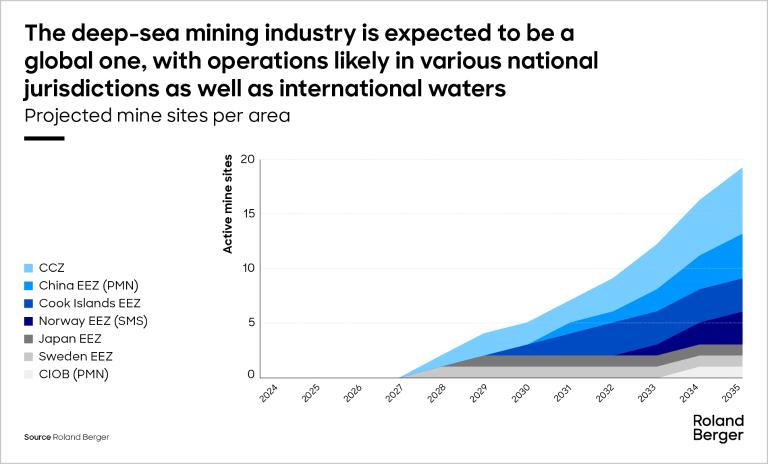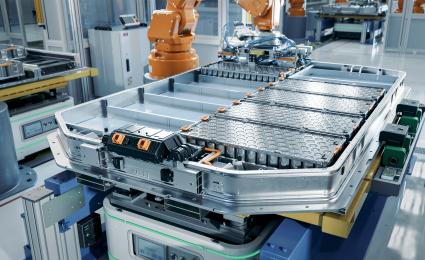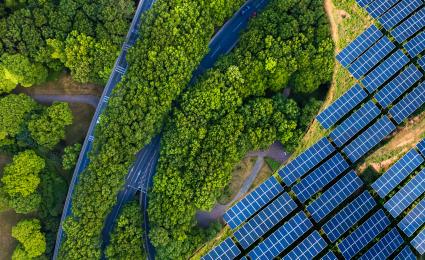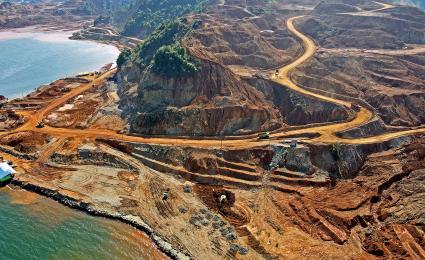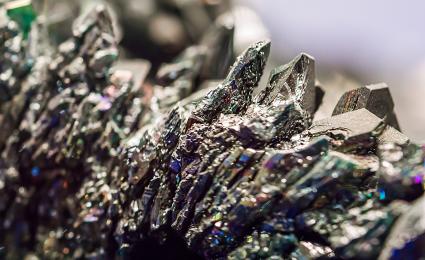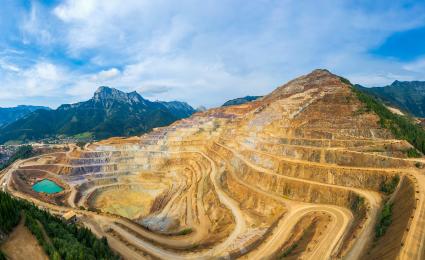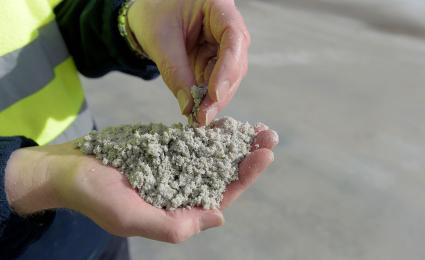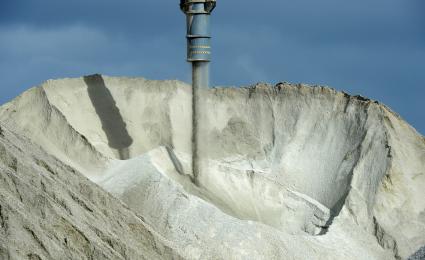Roland Berger's pursuit of sustainability and genuine emission reduction in the realm of lithium-ion batteries encompasses advancements in cell production, the establishment of gigafactories, exploration of cell formats, innovations in cell chemistry and a commitment to effective battery recycling solutions.


Deep-sea mining: a promising critical mineral solution
How subsea mining can close the growing demand-supply gap for some critical minerals
The green energy transition, as well as growing use of AI and advanced semiconductors, are rapidly driving demand for critical minerals. A new study by Roland Berger shows deep-sea mining could help diversify supply sources and close the demand-supply gap.

Over the next 25 years, massive expansion in the use of renewable energies and AI-based technologies will see the demand for numerous metals skyrocket. Batteries, solar panels, electricity transmission systems, semiconductors, and other crucial equipment all require specific critical minerals. In some cases, demand could outstrip supply: cobalt demand, for instance, could exceed currently known reserves by 423% in 2050. For nickel, this figure is 136%; lithium 280%.
To compound the issue, accessing critical minerals is also becoming harder. “Easy” sources have already been exploited, leaving terrestrial miners digging deeper, exploring further, and producing lower-grade resources. The result is rapidly increasing activity and environmental impact. Mineral recycling will help, but a fully circular value chain is unlikely to be in place before 2040.
There is also a geopolitical element to consider. Approximately two thirds of raw cobalt, for instance – a critical part of lithium-ion batteries – comes from the conflict-torn Democratic Republic of Congo. In addition, China has increasing control over both the supply and processing of numerous critical minerals.
"Deep-sea minerals are potential sources of metals that are fundamental to industrial growth and green energy initiatives."
A new, multi-billion-dollar sector
In this context, interest from countries, governments, industries, and investors in deep-sea mining has increased significantly during the last decade. While China is accelerating its efforts, also the new US administration drives and supports respective activities. In Germany, the Federation of German Industries (BDI) issued a position paper last October, asking for political support and commitment. Resource evaluations have identified mineable deposits amounting to millions of tons and valued at billions of dollars. This has led to exploration within both national jurisdictions and international waters, as well as the development of new technologies, processes, and systems.
A growing number of deep-sea mining projects are planned or already underway. They offer high market potential and significant impact on the supply of cobalt as well as other critical minerals.
The nascent deep-sea mining industry includes involvement from several different sectors, including dredging companies, offshore drilling contractors, and limited input from mining and oil and gas firms.
Ultimately, we expect deep-sea mining to be structured in a broadly similar manner to offshore oil and gas, with involvement of traditional mining companies as well. A group of operators hold licenses for seabed minerals in one or more jurisdictions. They act as project managers and coordinators for the various services and contractors that are required, including production support vessels, environmental studies, and resource modeling.
Assessing environmental impact
Given the experience with offshore oil and gas, the potential environmental impacts of deep-sea mining are heavily debated. Deep-sea mining could affect the marine ecosystem in different ways, potentially polluting waters or impacting biodiversity. Related onshore activities such as loading, unloading, and processing could also harm the environment. To this end, several states have either implemented or are developing regulations for the exploration and exploitation of seabed minerals within their national jurisdictions to minimize environmental impacts. The ISA is also following a similar path for international waters.
There are numerous factors to consider when comparing these potential impacts with those of terrestrial mining. Mining one deep-sea mineral type could yield at least three or four metals, with a lower carbon footprint than mining at three or four separate sites on land for one metal each would have, for instance. Other aspects like minimizing the impact on bio habitat could also be largely managed by applying the right technologies. In addition, deep-sea mining also requires much less infrastructure construction.
Projections for industry development
Based on a modest development scenario for deep-sea mining, focusing only on zones in which seabed minerals are being actively explored and clear regulatory paths exist, we expect as many as 19 active mine sites by 2035, with combined annual revenues cUSD 25 bn.
This would have a clear positive impact on the supply and demand balance for numerous minerals, especially for manganese and cobalt, and to a lesser extent for nickel.
Stakeholder perspectives – the pros and cons
For our latest study into deep-sea mining, we spoke to a variety of experts, interviewing both advocates and critics. These included operators, financiers, scientists, environmentalists, government agencies, NGOs, and regulators.
Unsurprisingly, sustainability featured prominently, but the biggest recurring concern was implementing the right regulatory framework. A strong and comprehensive framework is widely seen as the best way to understand and minimize environmental impact, but it also affects other areas such as financing. Despite considerable interest from institutional investors and major financial players in deep-sea mining, regulatory uncertainty is currently holding many of them back.
Deep-sea mining: looking ahead to 2050
At scale and with technological maturity, we believe deep-sea mining offers major advantages over terrestrial mining, including more flexible CapEx and large-scale repeatability. It has the potential to create 20,000 offshore jobs as well as further opportunities in related sectors.
The development of deep-sea mining could also impact the entire value chain, from extraction through to the final product. The most transformative change could be in refining processes for deep-sea materials, as it will require a different supply chain, new refining technologies, and new waste management practices.
While deep-sea mining remains a controversial topic, it deserves to be considered from a neutral perspective. Decision-makers need a clear understanding of the geographies involved, the environments impacted, the technologies used to minimize this impact, and the economic opportunity ahead. Countries and companies dependent on critical minerals should review their stance on deep-sea mining and consider stronger engagement to de-risk their supply chains.
We would like to especially thank Philip Gales and Dr. Rahul Sharma for their precious contribution in writing this report.
Register now to access the full publication “Deep-sea mining: A promising critical mineral solution” and delve into subsea mining's potential to meet critical mineral needs. Furthermore, you get regular news and updates directly in your inbox.


